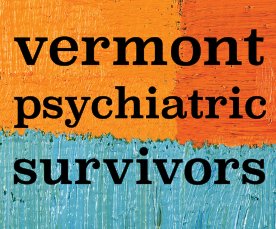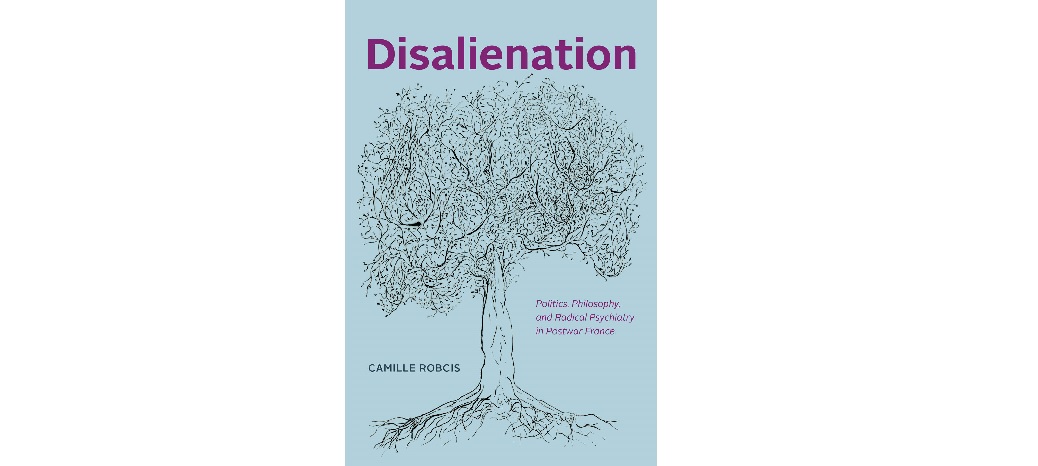A libertarian Marxist refugee from the fascist regime that won the Spanish Civil War, Dr. Francois Tosquelles, a Catalan, arrived in France less than a year before the German invasion. Following a months-long internment at the Septfonds concentration camp, his release sent him in 1940 to Saint-Alban, a small village in Occitanie, to practice psychiatry in an asylum administered by the collaborationist Vichy government.
Here, Tosquelles encountered an institution that had become a softer kind of Nazi death camp, where hunger and unsanitary conditions slowly killed off society’s outcasts and undesirables, as they did in psychiatric hospitals across occupied France during World War II. At disease-ridden Saint-Alban, for more than 800 inmates, haystacks served as both beds and toilets inside locked, dark, unheated cells.
The remarkable story of how Tosquelles and his peers, over the course of 22 years, transformed a psychiatric prison into a “healing collective” could have anchored a work of mainstream nonfiction in the narrative mode. In Disalienation: Politics, Philosophy, and Radical Psychiatry in Postwar France (University of Chicago Press, 2021) by Camille Robcis, a professor at Columbia University, it underpins an intricate exploration of the political and theoretical dimensions of institutional psychotherapy, the reform movement that began at Saint-Alban; and of the intellectual legacies of its adherents. These include several major 20th-century thinkers whose well-known philosophical works, Robcis argues, owe more to their backgrounds in psychiatry than many of their contemporary readers may realize.
The structure of Saint-Alban that developed under Tosquelles reflected, above all, the doctor’s commitment to anti-authoritarianism, a response as much to the politics of Franco, Hitler, and Stalin as to “the inhumanity of the psychiatric world.” What began as an effort to secure basic living conditions for patients, such as an adequate supply of food, gave way, after the war, to a new psychiatric model, the democratic “asylum-village.”
The walls separating the hospital from the surrounding town came down, as ordinary clothes replaced uniforms and medical blouses. Capitalizing on a newfound trust in their accountability, patients formed a cooperative with elections and committees that planned meals, performances, sporting events, work activities, field trips, and the publication of a weekly newsletter. Treatment took the form not only of one-on-one sessions with psychoanalysts but of a broader “psychotherapeutic dialogue,” amid open-ended “general meetings,” where even the gardeners, cooks, and secretaries took part.
Robcis stresses the distinction between institutional psychotherapy and “antipsychiatry,” a term that for her encompasses figures such as America’s Thomas Szasz and Italy’s Franco Basaglia, who advocated for deinstitutionalization and the demedicalization of mental health. Basaglia regarded the psychiatric hospital as a barrier to freedom, but Tosquelles believed that the institution “could be constantly rethought, reworked, and remapped” to promote human liberty, providing not only “the social environment for the cure” but also a new template for communal life.
While critical of mainstream psychiatry’s “focus on brain localization” and “historical entanglement with structures of power,” institutional psychotherapists remained open to drugs and electroconvulsive therapy. They rejected antipsychiatry’s classification of psychosis as a “cultural construction” just as they did the earlier view of it as a “pure product of biology.”
Tosquelles’s multi-sided approach required an understanding of society, culture, neurology, politics, and family, which he derived principally from Marx and Freud. Robcis quotes him in an interview from 1984: “Marx talks about the problems of man as a social being and Freud talks about the psychopathology of man, why he is condemned to suffer. Without them, we cannot understand anything about man, let alone about the mad.”
Before Tosquelles, neither Marx nor Freud had a strong presence in places like Saint-Alban. Freud himself had considered psychoanalysis a tool to treat neurotics, not psychotics. Jacques Lacan disagreed, bringing Freud’s belief in “the importance of listening to the patients’ narration of their lives and ailments” and his technique of free association to Paris’s Sainte-Anne Hospital, where his work helped inspire Tosquelles.
Tosquelles, in turn, inspired others, such as his student Jean Oury, who modeled the Loire Valley’s La Borde clinic after Saint-Alban. La Borde’s medical staff included the semiotician Félix Guattari, who, through “institutional analysis,” sought to picture how institutional psychotherapy’s reconfiguration of the psychiatric hospital could apply to other, perhaps larger sites, like cities, schools, and political organizations.
Guattari co-wrote several books with the post-structuralist Gilles Deleuze, with whom he aimed to unearth hidden currents of authoritarianism throughout society. Tosquelles had employed Freud’s concept of the unconscious mind and its irrational desires to try to understand the popular appeal of fascism as a political movement in the 1940s, but Guattari and Deleuze believed that their own “schizoanalysis,” as an emancipatory alternative to Freudian psychoanalysis, could actively fight “the fascism in our heads.” Their anarchic process of joint authorship, described by Deleuze as “never a homogenization, but a proliferation, an accumulation of bifurcations, a rhizome,” recalled, according to Robcis, “the ‘explosion’ of roles that was so important to institutional psychotherapy.”
Winning a significant readership in France, the resulting texts arguably became famous to some degree for their partial inscrutability, and here still, their concepts resist a digestible summary. In a volume full of complex ideas, addressed from an academic but largely accessible perspective, the general reader may finally begin to experience some frustration, though perhaps by no fault of the author.
But Guattari wasn’t the only practitioner of institutional psychotherapy who became a world-renowned philosopher. Not long after finishing medical school, the Martinican postcolonialist Frantz Fanon worked for 15 months at Saint-Alban, where he wrote articles for the patient-run newsletter, and subsequently set out to adapt Tosquelles’s strategies to a new context in North Africa.
To Fanon, Algeria’s Blida-Joinville hospital, premised on “enclosure and segregation,” operated as a colony within a colony. He succeeded in transforming the institution, but eventually he resigned in order to confront French colonialism directly – and, it seems, to imagine new “national cultures” for the Global South, rooted similarly in healing and disalienation.
The final intellectual figure examined by Robcis, Michel Foucault, didn’t practice at Saint-Alban, but he earned a degree in psychopathology from the University of Paris and “dabbled in experimental and clinical psychology” before settling into a career in academia and political activism. Robcis’s overview aims to trace his development as possibly the most prominent theoretician of antipsychiatry from a starting point of his engagement with psychiatry itself and particularly with institutional psychotherapy.
In his twenties, Foucault saw a potential for both healing and revolution in, as he put it, “therapies that offered patients concrete means to overcome their situation of conflict, to modify their milieu, or to respond in a more adapted way to the contradictions of their conditions of existence.” But could psychiatric hospitals – or psychoanalysis in any setting, given what Foucault saw as its intentional remove from “socially integrated forms of inter-subjective relations” – really achieve any of these goals? Despite early professions of support for “certain doctors” and their psychiatric reforms, Foucault warned from the beginning of the impossibility of any psychiatric cure “when we undo the relationship between a patient and his milieu.”
By Robcis’s account, Foucault had “lost hope” in psychiatry – even radical psychiatry – by 1957. This was before the publication of any of his major works, in which his belief in the arbitrariness of all behavioral norms allowed him to examine institutions like hospitals and prisons purely as instruments of social control. The author points out that, by the mid-1960s, Foucault’s followers – at London’s Kingsley Hall clinic, for instance – had come to view madness as “a ‘voyage’ rather than a form of suffering” and “an act of rebellion against repressive normativity that needed to be applauded.”
Antipsychiatry remains an active (if often maligned) current in the contemporary discourse of mental health. But institutional psychotherapy at best represents – likely to everyone’s detriment – a historical footnote, at least in the United States, where it never found a foothold in the first place. For Foucault, its innovations evidently weren’t good enough, but clearly the movement wrestled with the concerns that drove his work in ways that today’s incurious, depoliticized technocrats, whose psychiatry eschews both Marx and Freud, do not. In its radical self-consciousness, institutional psychotherapy imagined and implemented reforms that, if they’d become widespread, probably would have made Foucault’s critique of psychiatry – which Oury cautioned would lead only to budget cuts for hospitals – a lot less convincing.
Even toward the end of his life, however, Foucault apparently claimed an affinity for the work of Dr. Franco Basaglia, who in 1979 succeeded in persuading the Italian Parliament to abolish the country’s psychiatric hospitals. Historians may regard deinstitutionalization in the United States – which began before the publication of Foucault’s Madness and Civilization – as an ultimately neoliberal project rather than a liberatory one, given the subsequent rise of mass incarceration and the coercive nature of much of the nation’s remaining psychiatric “safety net.” But in Italy (particularly in Trieste, where Basaglia practiced his “democratic psychiatry”), a robust system of community-based mental healthcare replaced the institutions. As the previous issue of Counterpoint detailed (“Trieste Still Stands – for Now,” page 18), a center-right regional government now threatens this achievement.
Although Robcis notes that several young psychiatrists in France recently have “returned” to institutional psychotherapy in some form, the future of the movement – or, more accurately, of its underlying principles – doesn’t appear, for the author, to lie primarily in the mental health sphere. Disalienation’s epilogue mentions social movements like Occupy Wall Street, Los Indignados, and Nuit Debout, whose spontaneous assemblies have sought to reinvigorate an idea of “the common” as an improvisatory site for democratic resistance to the authoritarianism of both the market and the state. Robcis proposes Tosquelles’s experiment at Saint-Alban as one guide for arranging the public square of a new politics in accordance with commitments to self-management and “nonhierarchical practices.”
It may be possible to imagine the spirit of Saint-Alban as a governing logic for anarchist activist spaces, but does one really want to? The supremely flexible, transitory “institutions” in question here are institutions in a metaphorical sense, and for their organizers, that may constitute much of their appeal.
What makes Tosquelles’s story astonishing, however, is that France gave him the reins of an actual institution, a structure that held real power – complete power, in fact – over the lives of those within it. And while Robcis takes pains to emphasize the doctor’s anti-Stalinist bona fides, Tosquelles evidently didn’t decline to use that power, granted to him by the state, to advance his own idea of democracy at Saint-Alban. An important question is whether anyone with similar political inclinations will come near any sort of power anywhere ever again.

